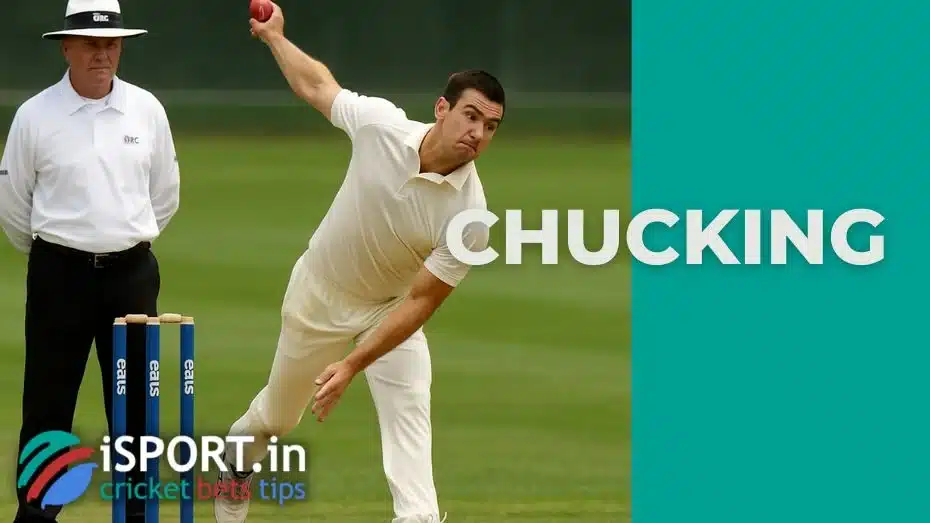Chucking

The distinction between an illegal delivery and a flawless delivery in cricket is extremely thin, and it has the potential to compromise the integrity of the entire match. Chucking in cricket occurs when a bowler throws the ball in a manner that appears more like hurling than bowling, losing that flowing motion.
From Rules to Controversy: Where Chucking in Cricket Begins
Why do rules even exist? To be broken, of course! And cricket is no exception. Like in any sport, the rules here create the foundation of fair play – making sure no one gets an extra advantage and that the outcome depends on skill, not on clever loopholes.
However, once a boundary is established, someone will attempt to cross it. Chucking in cricket, a covert, nearly imperceptible infraction that appears to be a typical delivery on the surface but subtly violates the rules underneath, was born as a result.
Chucking, to put it simply, is when a bowler straightens their arm more than is permitted by law. Everything appears flawless to the unaided eye: the run-up, the swing, and the release. However, the elbow moves slightly differently to add spin or speed to the ball.
Bowling vs Chucking: Spot the Difference
| Aspect | Legal Bowling | Chucking (Throwing) |
| Arm Position | Arm stays nearly straight, moves naturally over the shoulder | Elbow bends noticeably and then snaps straight |
| Elbow Extension Angle | Up to 15° allowed under ICC laws | Over 15° – violation, considered chucking |
| Body Movement | Smooth rotation of the torso, no jerks | Often a sharp push from the shoulder or upper body |
| Release Moment | Ball leaves the hand in a stable, controlled motion | Ball seems to “shoot out,” gaining extra impulse |
| Effect on Batsman | Effect on Batsman | Ball flies faster, often with an unexpected bounce or swerve |
| Overall Look | Natural and balanced | Looks like the bowler is throwing the ball, not bowling it |
Interestingly, chucking in cricket isn’t always about cheating. Some players groove a specific motion over years and might not even realize their arm straightens beyond the limit. That’s why modern teams often test their bowlers’ action internally before big matches.
Chucking in Cricket: The Consequences
Spotting chucking live is insanely tough. Everything occurs in an instant, and a few degrees of elbow extension could be the difference between a fair action and a violation. Sometimes, even experienced umpires are unable to distinguish between a true overextension and the player’s natural style.
That’s why cricket now relies on a full-blown verification system from slow-mo replays to biomechanical analysis, where every single movement is measured down to the millimeter.
Here’s what might happen if a bowler’s action is deemed illegal:
- Temporary suspension from bowling: The player can’t bowl in official matches until they fix their technique and pass a reassessment.
- Rehabilitation with coaches: Trainers work with the bowler to develop a legal action that still feels natural.
- Retesting: After corrections, the player must demonstrate the new motion in a controlled lab environment.
- Media and public pressure: The bowler’s name hits the headlines, and the scrutiny can sting more than the suspension itself.
- Risk of losing contracts: Repeat offenses may push clubs or leagues to pause or even terminate agreements.
And let’s not forget that chucking in cricket isn’t just about bending the rules, it’s also about player safety.
When a bowler’s arm extends too far, the ball gains unexpected pace and movement. For the batsman, that means one thing: less time to react.
It’s hard to truly picture all this just by reading, so the best move is to look up some slow-motion footage online – once you see it, you’ll never mistake a clean action for a chuck again.
